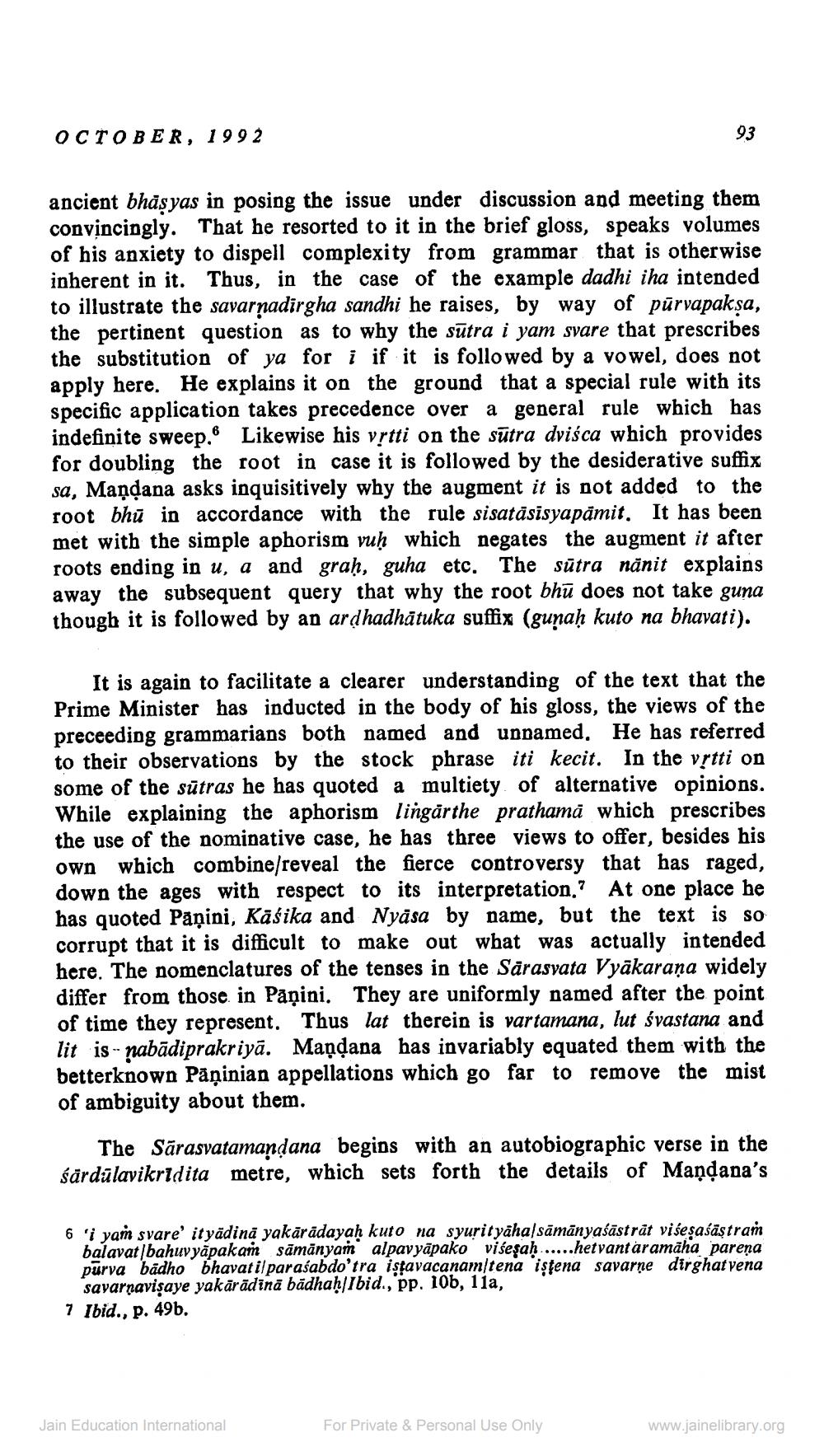________________
OCTOBER, 1992
ancient bhāṣyas in posing the issue under discussion and meeting them convincingly. That he resorted to it in the brief gloss, speaks volumes of his anxiety to dispell complexity from grammar that is otherwise inherent in it. Thus, in the case of the example dadhi iha intended to illustrate the savarnadirgha sandhi he raises, by way of pūrvapakṣa, the pertinent question as to why the sutra i yam svare that prescribes the substitution of ya for if it is followed by a vowel, does not apply here. He explains it on the ground that a special rule with its specific application takes precedence over a general rule which has indefinite sweep. Likewise his vṛtti on the sutra dviśca which provides for doubling the root in case it is followed by the desiderative suffix sa, Maṇḍana asks inquisitively why the augment it is not added to the root bhū in accordance with the rule sisatäsisyapamit. It has been met with the simple aphorism vuḥ which negates the augment it after roots ending in u, a and graḥ, guha etc. The sutra nănit explains away the subsequent query that why the root bhū does not take guna though it is followed by an arḍhadhātuka suffix (guṇaḥ kuto na bhavati).
93
It is again to facilitate a clearer understanding of the text that the Prime Minister has inducted in the body of his gloss, the views of the preceeding grammarians both named and unnamed. He has referred to their observations by the stock phrase iti kecit. In the vṛtti on some of the sutras he has quoted a multiety of alternative opinions. While explaining the aphorism lingarthe prathama which prescribes the use of the nominative case, he has three views to offer, besides his own which combine/reveal the fierce controversy that has raged, down the ages with respect to its interpretation." At one place he has quoted Paṇini, Kāšika and Nyasa by name, but the text is so corrupt that it is difficult to make out what was actually intended here. The nomenclatures of the tenses in the Sarasvata Vyakaraṇa widely differ from those in Panini. They are uniformly named after the point of time they represent. Thus lat therein is vartamana, lut śvastana and lit is-nabadiprakriya. Maṇḍana has invariably equated them with the betterknown Paninian appellations which go far to remove the mist of ambiguity about them.
The Sarasvatamanḍana begins with an autobiographic verse in the śārdulavikridita metre, which sets forth the details of Mandana's
6 'i yam svare' ityādinā yakārādayah kuto na syurityähalsamanyaśāstrāt viseṣaśāṣtram balavat bahuvyapakam samanyam alpavyapako visesah.....hetvantaramaha parena purva badho bhavatilparasabdo'tra istavacanam/tena iştena savarne dirghat vena savarnaviṣaye yakarādīnā badhaḥ/Ibid., pp. 10b, 11a,
7 Ibid., p. 49b.
Jain Education International
For Private & Personal Use Only
www.jainelibrary.org




